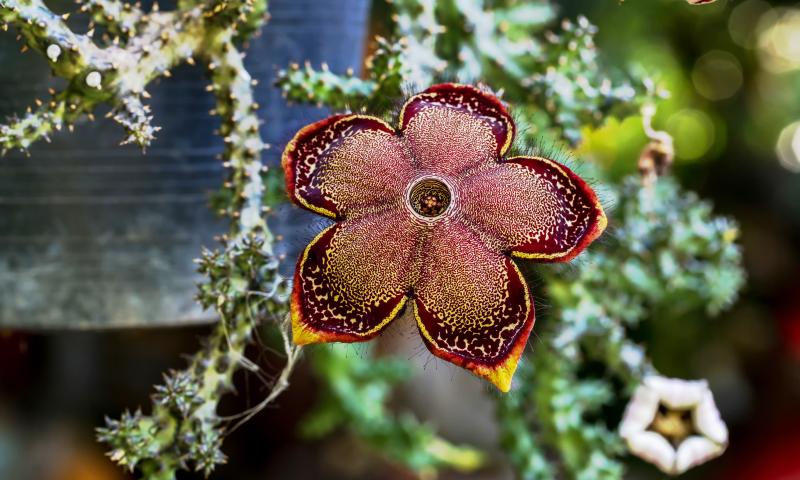 />
/>
Caralluma, more specifically known as Caralluma Adscendens, is a succulent plant renowned for its wide range of applications in traditional medicine and as a natural appetite suppressant. This article delves into its botanical characteristics, chemical composition, historical significance, taste profile, and general health benefits.
Botanical Characteristics
Caralluma Adscendens belongs to the family Apocynaceae. This plant primarily thrives in parts of the Arabian Peninsula, India, and Africa. As a succulent, it is uniquely adapted to arid conditions, characterized by its fleshy stems and leaves, which allow it to retain water effectively.
Its stems are green, erect, and can grow up to 30 centimeters in height. The flowers of the Caralluma plant are star-shaped, with a unique coloration ranging from purple to black, often accompanied by a foul odor that attracts flies for pollination.
Chemical Composition
Caralluma Adscendens contains a host of phytochemicals that contribute to its notable properties. The primary constituents include:
Pregnane Glycosides: These are believed to have an impact on appetite suppression.
Flavone Glycosides: Known for their antioxidant properties.
Megastigmane Glycosides: Another group of compounds contributing to the plant's potential health benefits.
Bitter Principles: These lend the plant its characteristic taste.
Historical Facts
Historically, Caralluma has been used by indigenous communities in its native regions for several purposes:
Appetite Suppressant: Tribesmen would consume chunks of Caralluma during long hunts or journeys to stave off hunger and increase endurance.
Thirst Quencher: Due to its succulent nature, it was also utilized to keep thirst at bay.
Everyday Consumption: Beyond its utility in specific circumstances, it was also a part of daily diets in certain communities.
Taste Profile
Caralluma is often described as having a slightly bitter taste, which can be attributed to the bitter principles present in its chemical makeup. This bitterness is one of the reasons it was believed to suppress appetite, as it can induce a sense of fullness or satiety.
General Health Benefits
While it's important to note that many of the traditional claims regarding Caralluma's health benefits need further scientific validation, some of the general health benefits attributed to this plant include:
Natural Appetite Suppressant: As mentioned, one of the primary uses of Caralluma historically was as an appetite suppressant. It's believed to influence hunger cues and promote feelings of satiety.
Enhanced Endurance: Historically used by tribesmen on long hunts, there's anecdotal evidence to suggest that Caralluma might boost stamina and endurance.
Antioxidant Properties: The flavone glycosides in Caralluma may offer antioxidant benefits, which means it could help in combating free radicals in the body.
General Well-being: Anecdotal accounts suggest that regular consumption might promote overall health and vitality.
Conclusion
Caralluma Adscendens is a remarkable plant with a rich history and an array of potential health benefits. Whether it's the indigenous tribesmen using it to curb hunger during long journeys or modern-day health enthusiasts exploring its benefits, Caralluma continues to intrigue and offer value. However, as with all natural remedies, it's crucial to use Caralluma responsibly and seek expert guidance when necessary.
